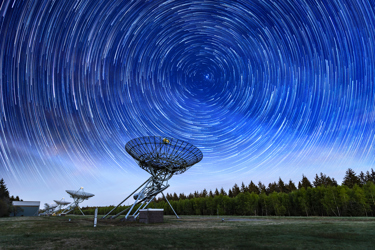Identifying And Reducing Phase Noise

By John Oncea, Editor

Phase noise in radar communications, military communications, and space and Satcom communications is typically caused by high vibrations, micro-vibrations, or g forces and acceleration sensitivity. But what exactly is phase noise and what are the best ways to eliminate it?
Phase noise can be thought of in a couple of different ways. Some define it to be on the spectral density of a signal’s phase only; others refer to the phase spectrum resulting from the spectral estimation of the signal test itself.
In an article on RG Globalnet, Wireless Telecom Group describes it as “a measurement in the frequency domain … used to quantify the frequency stability of an RF signal. If left unchecked, phase noise can degrade signal integrity, cause interference with nearby channels, and increase bit errors along a communications signal path.”
A second article by RF Microwave Consulting Services president and CEO Howard Hausman defines phase noise as “a parameter that affects many electronic systems, such as radar and communications. In radar, phase noise can hide doppler signals and, in communications, it has the potential to point a symbol vector to the wrong location. Understanding the mechanism causing phase noise helps the design engineer avoid the pitfalls of this phenomena.”
However defined, it is important to keep in mind that phase noise “reduces signal quality and increases error rates in communication links. Although there is no such thing as zero phase noise, the less you have, the better,” writes Orbital Research.
That’s Great – But What Can Be Done About It?
Before you can reduce phase noise you need to better understand it which is where testing and measurement come in. “Although there are many ways of measuring phase noise, the most straightforward is to use a spectrum analyzer,” writes Electronics Notes. “Essentially the analyzer is connected to the output of the unit under test via any suitable attenuator needed to reduce the power into the analyzer (if the output power from the unit under test is high).”
Electronics Notes further notes that the spectrum analyzer's filter and detector characteristics impact the phase noise measurement results and that the type of detector also has an impact. “If a sampling detector is used instead of an RMS detector and the trace is averaged over a narrow bandwidth or several measurements, then it is found that the noise will be underweighted,” writes Electronics Notes. “Adjustments for these and any other factors are normally accommodated within the spectrum analyzer, and often a special phase noise measurement set-up is incorporated within the software capabilities.”
As with any testing and measuring precautions need to be taken and using a spectrum analyzer is no exception. Using these three precautions will help obtain good results: ensure no external noise can be picked up, run the unit under test from the correct power source, and ensure analyzer performance is suitable. Electronic Notes goes into greater detail about each of these three precautions.
One other note: phase noise measurement systems are alternatives to spectrum analyzers. These systems may use internal and external references and allow measurement of both residual (additive) and absolute noise. Additionally, these systems can make low-noise, close-to-the-carrier, measurements.
A Phase Noise Reduction Case Study
“Phase noise is a key component of any satellite link,” writes Orbital Research. “Phase noise is particularly important to SATCOM system engineers. They are acutely aware of the impact of any noise source and design networks accordingly.”
So, let’s take a look at what contributes to and affects phase noise in a satellite link. Orbital Research identifies the following factors:
- Phase lock reference for BUC/LNB
- PLL LNB design
- Loop bandwidth
- Power supply noise
- Grounding (electronics, cables, and antenna structure)
- 20 Log(n)
“Some of these factors can be minimized through proper selection of subsystem equipment (stated/tested specs from the BUC and LNB manufacturers),” Orbital Research writes. “Some can be mitigated through good engineering practices and careful site installation (proper grounding in particular). One of the most important contributing factors is the stability of the oscillator that is generating the timing reference for any equipment with a frequency conversion stage (BUC or LNB).”
